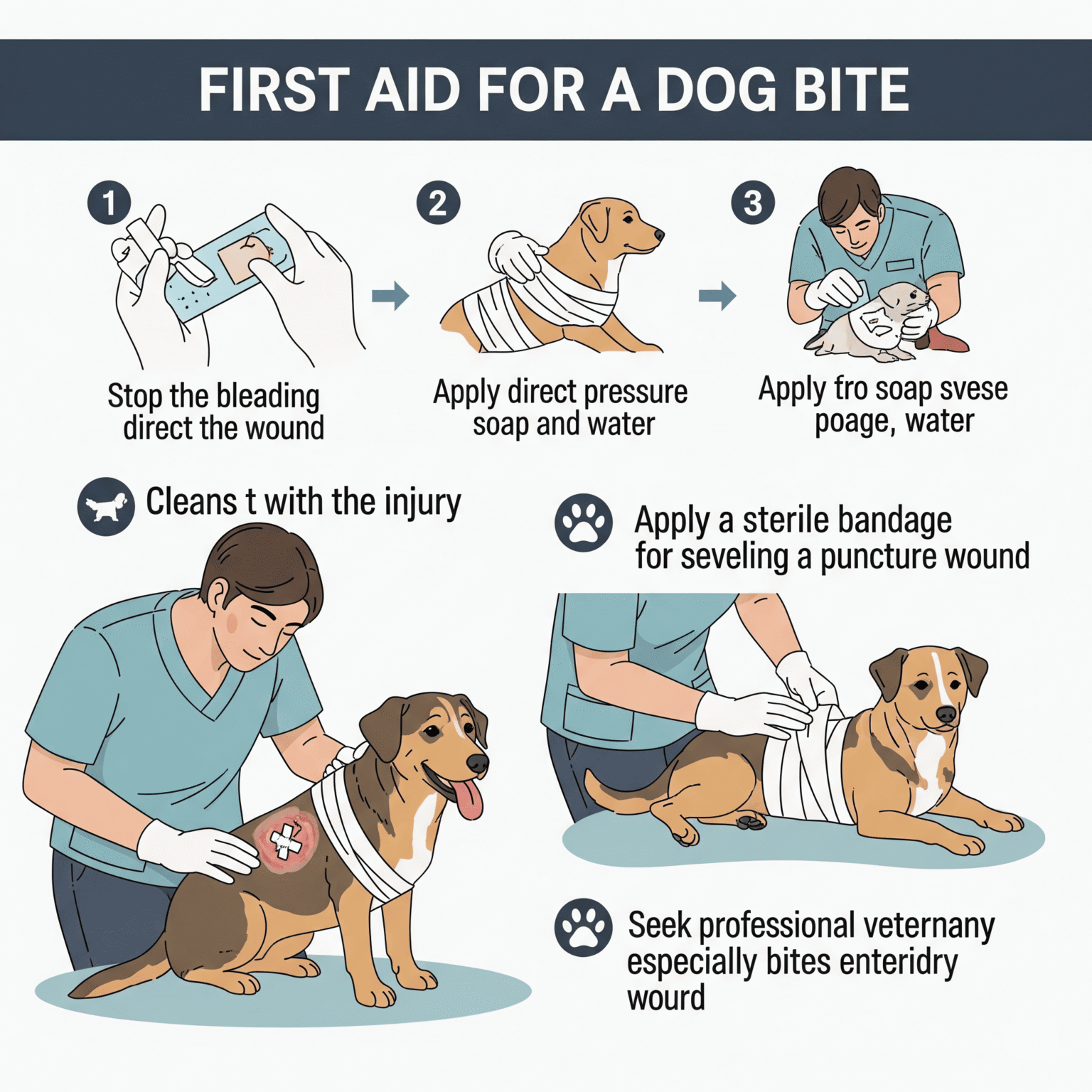Your First Steps: What to Do in the First 24 Hours After a Dog Bite
A dog attack is a shocking and frightening experience. In the moments and hours immediately following the incident, it’s completely normal to feel overwhelmed, in pain, and confused. Knowing what to do, step by step, can make all the difference in protecting both your health and your legal rights.
Think of this guide as a clear roadmap to help you navigate this difficult and stressful period.
Step 1 (The Absolute Priority): Ensure Safety & Get Medical Care
Before anything else, your physical safety is what matters most.
- Get to a Safe Place: If the dog is still loose, move yourself and anyone with you to a secure location immediately (inside a car, a house, or simply far away from the area).
- Basic First Aid: If the wound is bleeding, apply gentle pressure with a clean cloth. If you can, wash the wound gently with soap and water.
- See a Doctor Immediately: This step is non-negotiable, even if the wound looks like a minor scratch.
- Why is this critical? Dog bites carry a high risk of serious infection. A doctor will professionally clean the wound and may prescribe antibiotics or recommend a tetanus shot. They will also assess the risk of rabies.
- The Importance of a Record: Your visit to a doctor or an emergency room creates an official medical record that links your injuries directly to the incident. This document is the cornerstone of any future claim.
Step 2: Report the Incident & Create an Official Record
Once you are safe and have sought medical care, it is essential to notify the proper authorities.
- Call Local Police or Animal Control: Explain what happened. They will likely send an officer to document the incident.
- Why is this step so important?
- An Official Report: The officer’s report is an unbiased, official document that validates the details of the incident, including the time, location, and witness accounts.
- Public Health & Safety: Reporting the incident helps authorities track potentially dangerous animals and ensure they are vaccinated, which protects others in the community.
- Insurance Claims: Insurance companies will almost always require a copy of this official report as part of their claims process.
Step 3: Gather Information & Document Everything
You are the best person to document the details of what happened. Every piece of information you gather now will be invaluable later.
- The Dog Owner’s Information: Politely get the full name, address, and phone number of the dog’s owner.
- Witness Information: If anyone saw the attack, ask for their name and phone number. A witness’s account can be extremely powerful.
- Take Pictures: Use your phone to take clear photos of everything:
- Your Injuries: Take pictures of the wounds from multiple angles, both before and after medical treatment.
- The Location: Document the area where the attack occurred.
- Torn Clothing: Take photos of any clothing that was damaged during the attack.
- The Dog (If Safe): If you can do so from a safe distance, take a picture of the dog involved.
- Write Down Everything You Remember: While the details are still fresh in your mind, write down a chronological account of what happened. Don’t worry about style; just state the facts as you remember them.
Step 4: Identify the Dog and Its History
This information helps to establish the owner’s liability and assess the risk.
- Try to find out from the owner or witnesses if the dog has a history of aggression or if it has ever attacked someone before.
- Ask about the dog’s vaccination status, especially for rabies.
A Summary of Your First Steps
In the middle of the chaos, remember these priorities: Health first, then an official report, then complete documentation. By following these steps in the first 24 hours, you put yourself in the strongest possible position to protect your health and move forward with confidence and clarity.
Disclaimer:
This guide provides informational and practical guidance and does not constitute legal advice. For all medical concerns, please consult a healthcare professional. To understand your specific legal rights, we always recommend speaking with a qualified attorney.


